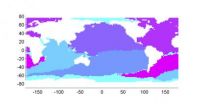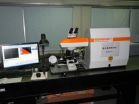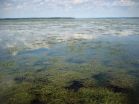(Press-News.org) WASHINGTON, D.C., September 2, 2014 – The Great Pacific Garbage Patch is an area of environmental concern between Hawaii and California where the ocean surface is marred by scattered pieces of plastic, which outweigh plankton in that part of the ocean and pose risks to fish, turtles and birds that eat the trash. Scientists believe the garbage patch is but one of at least five, each located in the center of large, circular ocean currents called gyres that suck in and trap floating debris.
Researchers from the University of New South Wales (UNSW), in Sydney, Australia, have created a new model that could help determine who's to blame for each garbage patch – a difficult task for a system as complex and massive as the ocean. The researchers describe the model in a paper published in the journal Chaos, from AIP Publishing.
"In some cases, you can have a country far away from a garbage patch that's unexpectedly contributing directly to the patch," said Gary Froyland, a mathematician at UNSW. For example, the ocean debris from Madagascar and Mozambique would most likely flow into the south Atlantic, even though the two countries' coastlines border the Indian Ocean.
The new model could also help determine how quickly garbage leaks from one patch into another, said Erik van Sebille, an oceanographer who collaborated with Froyland on the Chaos paper. "We can use the new model to explore, for example, how quickly trash from Australia ends up in the north Pacific."
At the heart of the researchers' work on the origins and fate of floating rubbish lies a bigger question – how well do the ocean's surface waters mix?
THE ANATOMY OF OCEAN CURRENTS
Fast-moving ocean currents form due to winds, differences in water temperatures, salinity gradients across the globe, and the forces caused by the spinning Earth. Currents stir ocean waters, but they also serve as barriers that minimize mixing between different ocean regions, much like the blast of fast-moving air at the entrance of an air-conditioned store keeps the cold inside air from mixing with the warm outside air.
Froyland, van Sebille and their UNSW colleague, Robyn Stuart, divided the entire ocean into seven regions whose waters mix very little. Their approach borrowed mathematical methods from a field known as ergodic theory, which has been used to partition interconnected systems like the internet, computer chips and human society, and the new analysis revealed the underlying structure of the ocean without getting bogged down in complex simulations.
"Instead of using a supercomputer to move zillions of water particles around on the ocean surface, we have built a compact network model that captures the essentials of how the different parts of the ocean are connected," said Froyland.
According to the new model, parts of the Pacific and Indian oceans are actually most closely coupled to the south Atlantic, while another sliver of the Indian Ocean really belongs in the south Pacific.
"The take-home message from our work is that we have redefined the borders of the ocean basins according to how the water moves," said van Sebille. The geography of the new basins could yield insights into ocean ecology in addition to helping track ocean debris. The researchers say their modeling technique could also be applied on a smaller scale – determining for example how much Canadian and American waters mix in the Great Lakes or how an oil spill might spread in the Gulf of Mexico.
INFORMATION:
The article, "How well-connected is the surface of the global ocean?" is authored by Gary Froyland, Robyn M. Stuart, and Erik van Sebille. It will be published in the journal Chaos: An Interdisciplinary Journal of Nonlinear Science on September 2, 2014 (DOI: 10.1063/1.4892530). After that date, it can be accessed at: http://scitation.aip.org/content/aip/journal/chaos/24/3/10.1063/1.4892530
The authors of this paper are affiliated with the University of New South Wales (UNSW).
ABOUT THE JOURNAL
Chaos: An Interdisciplinary Journal of Nonlinear Science is devoted to increasing the understanding of nonlinear phenomena and describing the manifestations in a manner comprehensible to researchers from a broad spectrum of disciplines. See: http://chaos.aip.org/
Giant garbage patches help redefine ocean boundaries
New maps show flotillas of ocean filth, illustrating where trash flows globally and revealing how sea surfaces are connected in unexpected ways
2014-09-02
ELSE PRESS RELEASES FROM THIS DATE:
New method for non-invasive prostate cancer screening
2014-09-02
WASHINGTON D.C., Sept. 2, 2014 – Cancer screening is a critical approach for preventing cancer deaths because cases caught early are often more treatable. But while there are already existing ways to screen for different types of cancer, there is a great need for even more safe, cheap and effective methods to save even more lives.
Now a team of researchers led by Shaoxin Li at Guangdong Medical College in China has demonstrated the potential of a new, non-invasive method to screen for prostate cancer, a common type of cancer in men worldwide. They describe their laboratory ...
Scientists create renewable fossil fuel alternative using bacteria
2014-09-02
The development is a step towards commercial production of a source of fuel that could one day provide an alternative to fossil fuels.
Propane is an appealing source of cleaner fuel because it has an existing global market. It is already produced as a by-product during natural gas processing and petroleum refining, but both are finite resources. In its current form it makes up the bulk of LPG (liquid petroleum gas), which is used in many applications, from central heating to camping stoves and conventional motor vehicles.
In a new study, the team of scientists from ...
A handsome face could mean lower semen quality
2014-09-02
Contrary to what one might expect, facial masculinity was negatively associated with semen quality in a recent Journal of Evolutionary Biology study. As increased levels of testosterone have been demonstrated to impair sperm production, this finding may indicate a trade-off between investments in secondary sexual signaling (i.e. facial masculinity) and fertility.
Interestingly, males estimated facial images generally more attractive than females did, suggesting that males may generally overestimate the attractiveness of other men to females.
INFORMATION: END ...
Underwater grass comeback bodes well for Chesapeake Bay
2014-09-02
CAMBRIDGE, MD (September 2, 2014)—The Susquehanna Flats, a large bed of underwater grasses near the mouth of the Susquehanna River, virtually disappeared from the upper Chesapeake Bay after Tropical Storm Agnes more than 40 years ago. However, the grasses mysteriously began to come back in the early 2000s. Today, the bed is one of the biggest and healthiest in the Bay, spanning some 20 square miles. A new study by scientists at the University of Maryland Center for Environmental Science explores what's behind this major comeback.
"This is a story about resilience," said ...
Men who exercise less likely to wake up to urinate
2014-09-02
MAYWOOD, Ill – Men who are physically active are at lower risk of nocturia (waking up at night to urinate), according to a study led by a Loyola University Chicago Stritch School of Medicine researcher.
The study by Kate Wolin, ScD, and colleagues is published online ahead of print in Medicine & Science in Sports & Exercise, the official journal of the American College of Sports Medicine.
Nocturia is the most common and bothersome lower urinary tract symptom in men. It can be due to an enlarged prostate known as benign prostatic hyperplasia (BPH) -- as the prostate ...
Observing the onset of a magnetic substorm
2014-09-02
Magnetic substorms, the disruptions in geomagnetic activity that cause brightening of aurora, may sometimes be driven by a different process than generally thought, a new study in the Journal of Geophysical Research: Space Physics shows.
Hwang et al. report observations using the Cluster spacecraft and ground-based magnetometers associated with the onset of a substorm. They saw two consecutive sudden jumps in the current sheet normal component of the magnetic field in the plasma sheet (the surface of dense plasma that lies approximately in Earth's equatorial plane), separated ...
Researchers uncover hidden infection route of major bacterial pathogen
2014-09-02
Researchers at the University of Liverpool's Institute of Infection and Global Health have discovered the pattern of infection of the bacterium responsible for causing severe lung infections in people with cystic fibrosis.
Pseudomonas aeruginosa is usually harmless to humans, but in people with cystic fibrosis (CF) or who have weakened immune systems – such as those who have had an operation or treatment for cancer – it can cause infections that are resistant to antibiotics. In CF patients in particular, infections can be impossible to eradicate from the lungs.
The ...
Aging gracefully: Diving seabirds shed light on declines with age
2014-09-02
Scientists who studied long-lived diving birds, which represent valuable models to examine aging in the wild, found that blood oxygen stores, resting metabolism and thyroid hormone levels all declined with age, although diving performance did not. Apparently, physiological changes do occur with age in long-lived species, but they may have no detectable effect on behavioral performance.
The Functional Ecology findings suggest that reductions in metabolism with age can be viewed as strategic restraint on the part of individuals who are likely to encounter energy-related ...
Could poor stomach absorption of drugs reduce autism medications' effectiveness?
2014-09-02
Recent research has revealed that many children and adults with autism experience gastrointestinal symptoms and that such symptoms can impact the absorption and availability of medications.
Because approximately 35% of people with autism take at least one psychotropic medication to help control their symptoms, the authors of a Journal of Clinical Pharmacology commentary are calling for a formal evaluation of the potential relationship between gastrointestinal symptoms and the effectiveness of autism medications. Alternative modes of drug administration may be needed to ...
Modern population boom traced to pre-industrial roots
2014-09-02
The foundation of the human population explosion, commonly attributed to a sudden surge in industrialization and public health during the 18th and 19th centuries, was actually laid as far back as 2,000 years ago, suggests an extended model of detailed demographic and archeological data.
The Public Library of Science One (PLOS ONE) recently published the analytical framework developed by Aaron Stutz, an associate professor of anthropology at Emory University's Oxford College.
"The industrial revolution and public health improvements were proximate reasons that more people ...
LAST 30 PRESS RELEASES:
Cannabis legalization is driving increases in marijuana use among U.S. adults with historically lower consumption rates
Multifunctional dipoles enabling enhanced ionic and electronic transport for high‑energy batteries
Triboelectric nanogenerators for future space missions
Advancing energy development with MBene: Chemical mechanism, AI, and applications in energy storage and harvesting
Heteroatom‑coordinated Fe–N4 catalysts for enhanced oxygen reduction in alkaline seawater zinc‑air batteries
Meta-device for precision lateral displacement sensing
Plasma-guided mitotane for the treatment of adrenocortical carcinoma: adjuvant care to advanced disease
Theoretical study of laser-enhanced nuclear fusion reactions
Social environment impacts sleep quality
Optimized kinetic pathways of active hydrogen generation at Cu2O/Cu heterojunction interfaces to enhance nitrate electroreduction to ammonia
New design playbook could unlock next generation high energy lithium ion batteries
Drones reveal how feral horse units keep boundaries
New AI tool removes bottleneck in animal movement analysis
Bubble netting knowledge spread by immigrant humpback whales
Discovery of bats remarkable navigation strategy revealed in new study
Urban tributaries identified as major sources of plastic chemical pollution in the Yangtze River
UK glaucoma cases higher than expected and projected to reach 1.6 million+ by 2060
Type 2 diabetes prevention could more than halve carbon footprint linked to disease complications
Over 1 million estimated to have glaucoma in UK
Early treatment can delay rheumatoid arthritis for years
National childhood type 1 diabetes screening is effective and could prevent thousands of emergency diagnoses, UK study shows
Mix of different types of physical activity may be best for longer life
Continuous care from community-based midwives reduces risk of preterm birth by 45%
Otago experts propose fiber as first new essential nutrient in 50 years
Auburn Physics PhD student earns prestigious DOE Fellowship
AI tool helps you learn how autistic communication works
To show LGBTQ+ support, look beyond Pride Month
Using artificial intelligence to understand how emotions are formed
Exposure to wildfire smoke late in pregnancy may raise autism risk in children
Breaking barriers in lymphatic imaging: Rice’s SynthX Center leads up to $18 million effort for ‘unprecedented resolution and safety’
[Press-News.org] Giant garbage patches help redefine ocean boundariesNew maps show flotillas of ocean filth, illustrating where trash flows globally and revealing how sea surfaces are connected in unexpected ways




